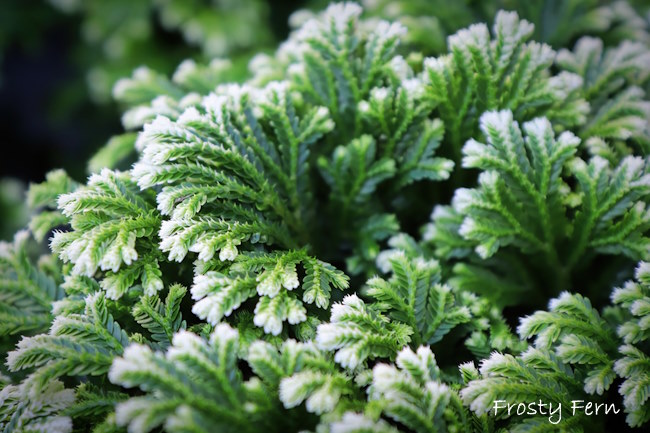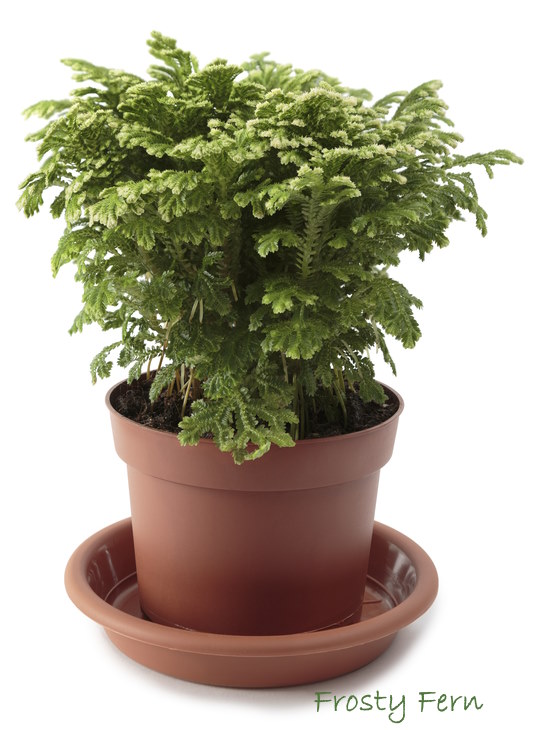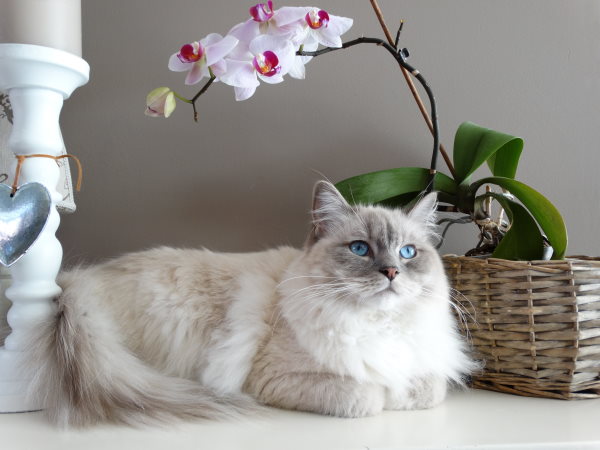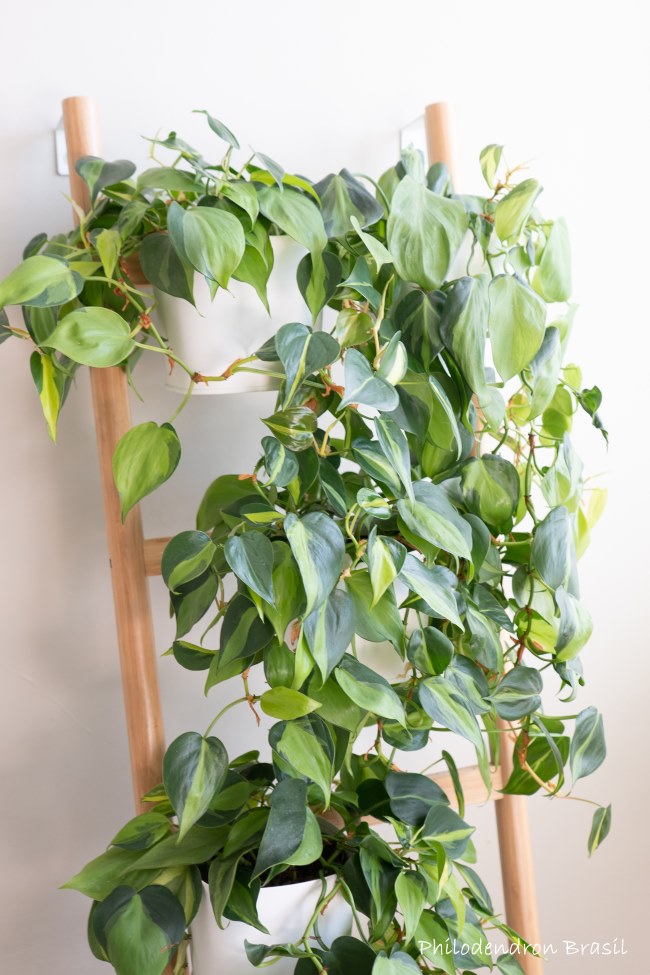Frosty Fern Care
Frosty fern care can be a challenge until you get to know this tropical houseplant. It can seem fussy till it get what its wants. But with this guide, you'll get my growing tips for success with Selaginella.
Looking like a tiny tree dusted with snow, this eye-catching plant has nudged its way into the holiday season. It's a welcome addition, too. Handsome all on its own, frosty fern also adds lush, green foliage among your flowering Christmas plants.
 Snowy white tips give Frosty Fern its common name. Photo © Amelia Martin
Snowy white tips give Frosty Fern its common name. Photo © Amelia MartinGet to Know Frosty Fern Plant
Known botanically as Selaginella martensii 'Variegata' this captivating cultivar is part of the Selaginella genus that includes about 700 species of upright, spreading or trailing spikemoss plants. In their native Southern Mexico and Central America, Selaginella spp. grow as groundcover.
Frosty fern grows from upright stems that are naturally branching. Its frond-like leaflets are small and compact, adding wonderful texture to any houseplant grouping.
In recent years, this stylish spikemoss has become a must-have during the holidays for its white-tipped foliage that look like mini branches dusted with snow.
How big does frosty fern get? At maturity, it will reach a height of 6" to 12".
How long will it last? Frosty fern is a tender evergreen perennial. You'll enjoy your houseplant for years if you can meet its needs. Although it's called "frosty," this tropical native wants snuggly warmth indoors. And keep it moist at all times. Regular watering and high humidity will make it feel right at home.
Wondering about those brown stringy things dangling from the pot? They are aerial roots -- or air roots -- that sprout from the stems. In the wild, air roots help to stabilize a plant in its surroundings. They don't bother anything, but they're not necessary for your indoor plant. Don't like them? Cut 'em off.
Frosty Fern Propagation: How to Get More Plants
Propagating is easy to do. Selaginella is a vigorous grower and can be grown from stem cuttings.
With clean, sharp scissors, take stem tip cuttings in spring or summer. Poke the ends in moist potting mix. Cover the container in plastic or with a glass cloche to maintain high humidity.
Frosty fern will root in about 2 weeks.
Frosty Fern Care Problems, Solutions and Answers
Brown, shriveled leaves are the result of dry air. Set your houseplant on a humidity tray or use a cool-mist room humidifier to give it the moist air it craves.
Prune it back in spring if you want to shape it up. Don't toss out those stem cuttings -- they'll root easily for more plants.
Repot in spring when it outgrows its pot. Use a pot with a drainage hole to prevent soggy soil, which will lead to root rot. Want to use a decorative pot without drainage holes? Use it as a cachepot. Just slip a plain nursery pot into the cachepot. I put small rocks in the bottom of cachepots to keep the inner pot above the drainage water.
Is Selaginella poisonous to pets? No. According to the ASPCA, it's non-toxic and safe around cats and dogs.
White tips turning green? Don't worry if your spikemoss loses its white variegation in summer. Frosty fern may turn all green during the warm, sunny months. You can rest assured its frosty tips will whiten again in winter. Also, take care not to over-fertilize. Too much nitrogen (the N in the NPK) can cause leaflets to turn all green.
 Variegated Selaginella is popular houseplant for the holidays. Photo © Vladimir Konjushenko
Variegated Selaginella is popular houseplant for the holidays. Photo © Vladimir KonjushenkoFrosty Fern Care
Light: Bright, indirect sunlight. Keep it out of hot, direct sunlight, which will scorch its foliage.
Water: Keep the potting mix moist at all times. Frosty fern will not tolerate soggy soil, which leads to root rot. Use a pot with a drainage hole and empty the drainage tray after watering. Remember to always use room-temperature water for your tropical houseplants because cold water is a shock to them.
Humidity: This tropical native likes moist air. Aim to maintain at least 60% relative humidity around it. It's a good idea to use a humidity gauge near your houseplant, rather than guess. Indoor air can become extremely dry during the winter months without our noticing it. The most efficient way to boost indoor humidity is with a cool-mist room humidifier. Another option is to keep your frosty fern in a Wardian case.
Temperature: Average room temperatures (65-75°F/18-24°C). Try to maintain a steady temp -- Selaginella doesn't like it too cold or too hot, especially drafts. Keep this plant away from entryways and heat/AC vents.
Soil: Fast-draining mix that's slightly acidic to neutral, with a pH range of 5.5 to 6.5. Peat moss-based potting mix with perlite or horticultural sand added for faster drainage is ideal. Selaginella martensii will not tolerate soggy soil.
Fertilizer: Feed once a month spring through fall with a balanced (such as 10-10-10 NPK) liquid fertilizer, at half the recommended amount on the label. With frosty fern care should be taken not to over-do it; Selaginella is not a heavy feeder. Add fertilizer while watering to prevent burning the roots.


